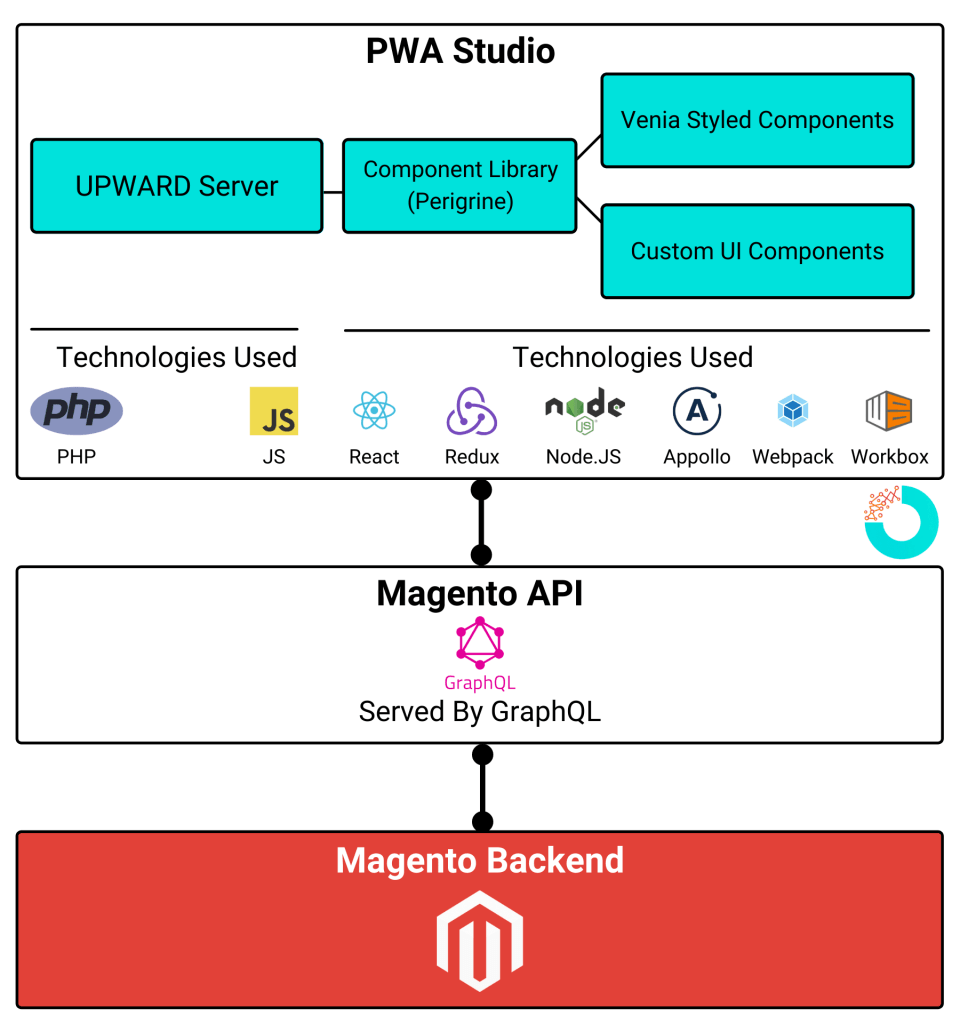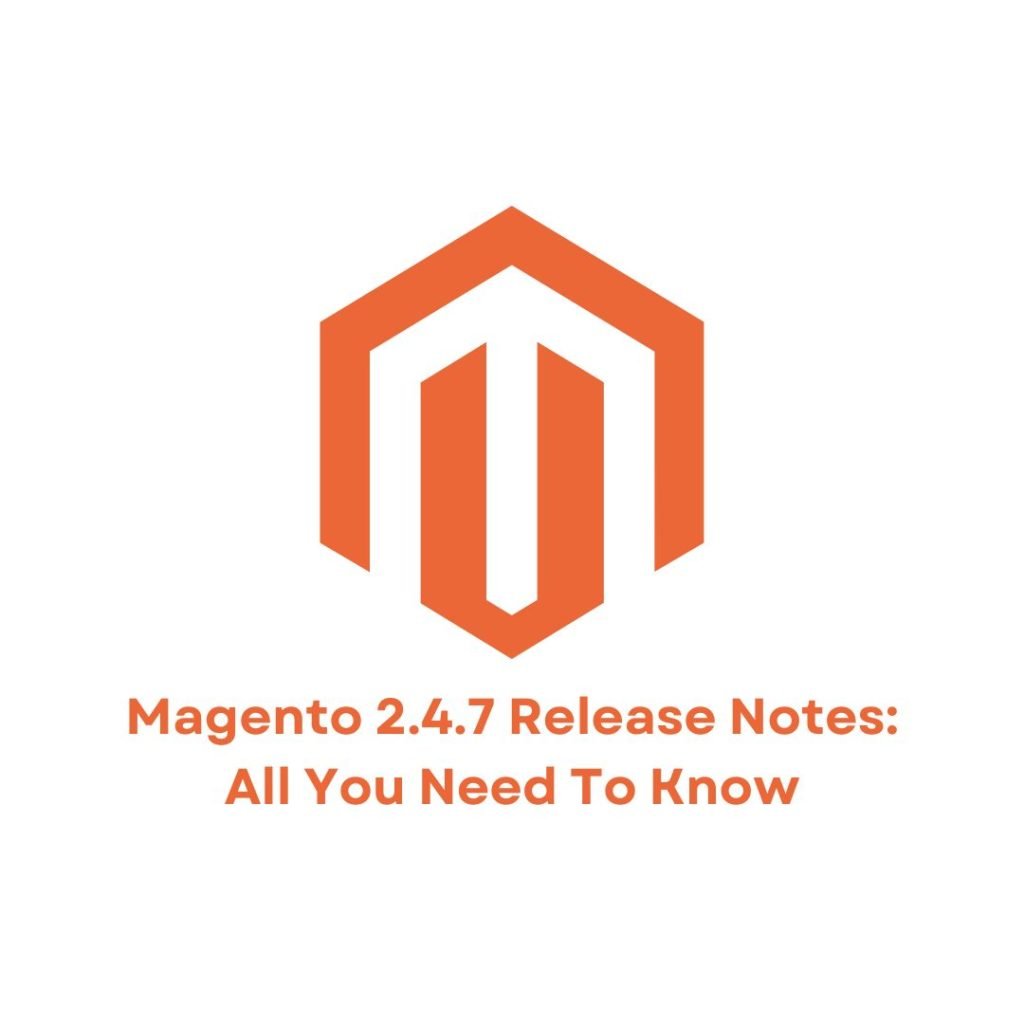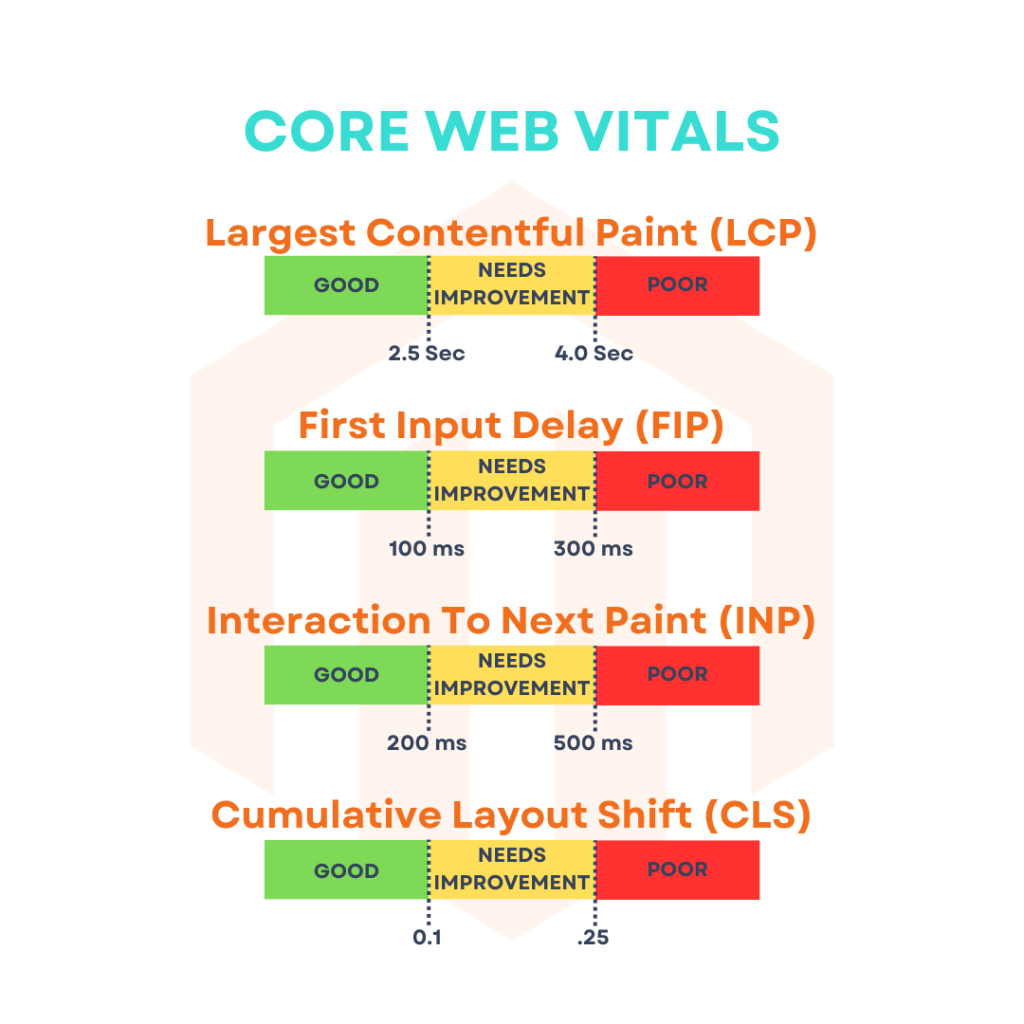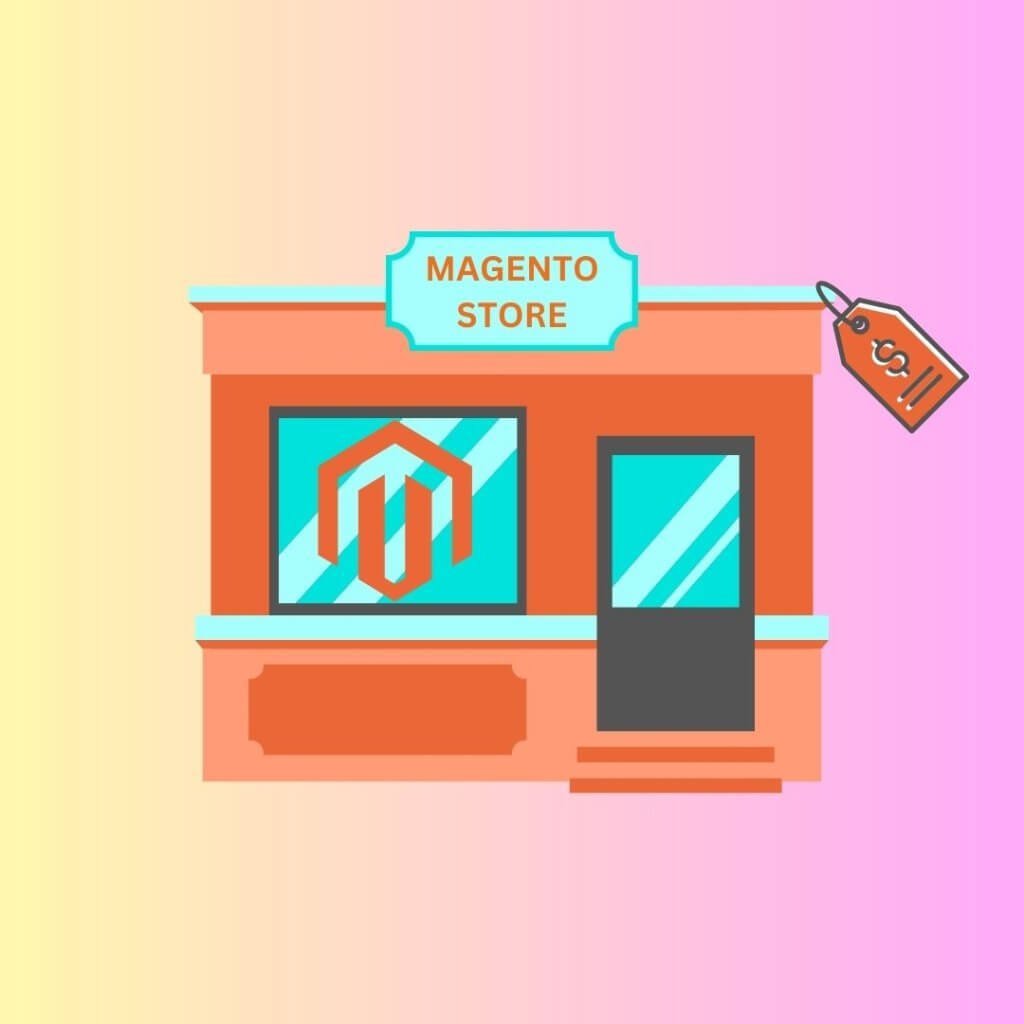
The e-commerce industry has been transitioning for the last decade thanks to the advent of smartphones with huge capabilities. One such popular solution is Headless commerce. Currently, Magento is amongst the biggest e-commerce development platforms and no qualm over the fact that it is leading this innovative solution. Everyone is going forward with this omnichannel e-commerce strategy and Magento 2 headless PWA is one of the best solutions you will find out here.
Headless Magento is a completely new epithet for describing an e-commerce store that is developing using Magento e-commerce platform. However, it employs a different technology for UI & UX. The Headless Magento PWA leverages web development technologies for delivering a mobile app experience to the users. It uses Magento REST API endpoints for the store functionalities. Therefore, you will get an analogue of PWA for Magento. In this article, we will get a complete overview of Headless Magento PWA. Let’s continue reading it to get a plethora of knowledge… Read Related Blog Of ScandyPWA & Magento.
Headless Magento PWA: Introduction
Magento Headless PWA is a web technology for making a Magento store which can act & feel like a mobile app. It is the same as a native application regardless of browser choice. There will be multiple capabilities of the app such as push notifications, working on a slower internet connection, offline mode (coming soon), loading the app on the home screen, and much more. It would be quite easy to customize the app as the front end would be built on the React JS.
A headless PWA is a very light app, thus, it will take very less time to load in comparison to the traditional native mobile app and website. It can result in a high conversion rate and lower bounce rate. Magento has recently introduced the PWA Studio project in Magento 2.3* version.
Why do we need Magento PWA Studio?

Now, Magento 2 is shifting its focus on the PWA development for supporting headless Magento 2. PWAs are going to be the future of web application development. Thus, PWA will be the right choice for giving the web store app-like experiences. It gives the front-end developers an open-ended toolkit for creating PWA themes. Thus, the developers don’t have to put much effort into build in comparison to a traditional standalone application.
Features of the Magento PWA Studio:
These are the features of the PWAs:
- Magento PWA Studio is lightweight & super-fast, thus gives a great experience to the users
- Accessible in poor connectivity
- Easy to customize
- PWA app supports a feature called PWA Scan & Go. This feature allows the user to instantly scan a barcode linked with the product and add the product in the cart.
- Support for Push Notifications
- PWA applications would be available offline. However, this feature hasn’t come yet.
- Support for multiple mobile platforms such as Android & iOS.
- Responsive on multiple platforms with cross-browser compatibility.
- Gives the look & feel of a native app
- No issues with updating
- Users can install a PWA directly from the website
- No need of submitting it to an App Store
- Better UI which leads to driving more traffic & conversions
- Admin can set the username & password from the backend
- The admin can also set the splash background image of the application
- Admin can manage or add banner images, notifications, featured categories, images, and icons.
Developing APK & IPA Files:
Now it is possible to develop APK & IPA files of the PWA for publishing it on the App Store & Play Store. The users would be able to find the app on the app marketplace as well. Thus you would be discoverable to the users on the Google Play Store and Apple App Store as well.
Magento 2 Headless PWA Resources:
You can get the most important information of application shell architecture here. It is a standard design for headless PWA apps. If you are not having a complete understanding of this topic, please go through it first.
2. Going Headless:
This repository was created during Imagine 2017 DevExchange sessions. It contains many different ideas for the usage of Magento’s Web API with custom frontend – Headless Magento 2+. It is a highly critical and painful point in Web API flows & development.
If you are having experience in developing Magento 2 extensions, then you can easily get answers for all your questions regarding 3rd party modules, Headless Magento, in this article.
Here you will get the demo of adding & editing CMS using the REST API in Magento 2.
It is a PHP wrapper for the Magento 2 APIs for offering the ease of use for retrieving and setting data.
Magento 2 Headless PWA Explanation:
After going through all the above-mentioned resources, you must be having no qualm over the fact that Magento 2 is becoming a PWA platform. The company is focusing on a new suite of tools designed to provide developers with the easiest way to build Magento 2 PWA stores.
The Magento 2 Headless PWA will install & run code on the users’ devices with a better speed & capability in comparison to the “single-page JS apps” of the past. But it is not an app, it is a web. It has been written in HTML, CSS, and JavaScript. No domain-specific language or native framework has been used. Also, it is progressive i.e. it lazy-loads itself.
Magento 2 headless PWA is better than any other website because of these reasons:
· Minimum network traffic:
PWA can work even in the lost network connection. Obviously, they will give the appearance of work, but in slow network conditions, users can work with the app. Apart from this, the first-page load serves a small shell document, web traffic is served on HTTPS, Service Worker do the intelligent caching, no page refresh, app code loads new features as required, etc.
· Non blocking techniques:
These techniques keep responsive at 60fps and deliver an experience like a native app. DOM elements have not interfered directly, complex calculations avoid layout thrash, the page doesn’t jump around during the content load.
- ServiceWorker is a “smart client” which doesn’t need network traffic for every interaction.
- PWA will work as an app on the home screen just like native apps.
The tools are highly user-friendly. The existing tools were hard to expertise and use on the frontend, however, the case is different in Magento PWA Studio. Almost all early-stage designs are concerned with developer experience. Don’t consider the PWA Studio just as a theme. You will get end-to-end self-education experience with a full feedback cycle, better QA, and robust deployment.
The team has to rely on the Magento community in all the critical aspects with developers all over the world. JS & CSS professionals, trainers, stakeholders, full-stack developers, etc. The Magento PWA Studio’s success depends on the diversity of opinions and thoughts given by the community.
The main purpose behind PWA Studio is to streamline the development of Magento 2 PWA for every developer. Even a novice developer can hack on a store in minutes with this suite. It also lets the developers build faster stores in less time. It would be less frustrating & and exciting for a merchant with one more instant shopping platform.
Magento 2 Headless PWA & Core Concepts:
API Layer:
You must have been using the Magento REST API coverage, but you should be ready with the PWA Studio as it will come up with new API methods. The new efficient API endpoints are also planned. There may be a new API style for smoother & customized responses.
Application Shell:
There is a simple PHTML file as a basis for handling every HTML response. In Magento 2 PWA, it will manage multiple areas. Firstly, the application shell will work with inline CSS and global data. Apart from this, it can manage minimal branded UI during load & indexable and also linkable metadata for the page. It is necessary that App Shell will be responsible for seeding JS files.
Application Framework:
Magento PWA Studio lets you run the Magento store in “headless mode”. Therefore, you can get a single-page JS app running on a new core JS framework for certain privileges.
- You don’t have to check for string templates, dirty state, and 2-way data-binding as it can implement the “unidirectional data flow” pattern with pure components. It can render methods and virtual DOM reconciliation.
- Magento 2 PWA lets you use ReactJS for rendering and event handling. Progressive loading by 3rd parties is among the other benefits of PWA.
- Redux is another benefit. It can manage all shared states and reduce functions. React-Redux can bind state transformations to view & optimize renders. For achieving maximum performance, it swaps React with Preact in the final product bundle.
- The testing will be done using Jest & Storybook
- For pre-compiling the store configuration into the frontend, the tool builds, bundles, and minifies with Webpack enhanced with custom loaders & plugins.
Wrapping Up:
In this article, we have studied the Headless Magento PWA along with its benefits & features. At Ceymox Technologies, the best Magento development company in India, we are having expertise in developing Magento PWA apps. Let us know your requirements.
 Hubspot SEO Certified |  Hubspot SEO II Certified |  Google Ads Search Certified |  Google Analytics Certified |
Sreehari N Kartha is a certified SEO expert, currently serving as a Digital Marketing Analyst at Ceymox. Specializing in diverse digital marketing endeavors, he adeptly manages advertising platforms such as Google Ads, Facebook Ads, Instagram Ads, Whatsapp Ads and LinkedIn Ads. With a strong focus on SEO (Search Engine Optimization) and SMM (Social Media Management & Marketing), Sreehari excels in optimizing online presence and engagement. Additionally, he harbors a keen interest in Crypto, NFTS & Web3 technologies, enhancing his proficiency in the ever-evolving digital landscape.
View All Articles








